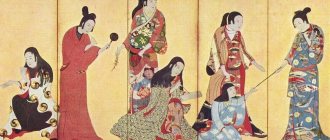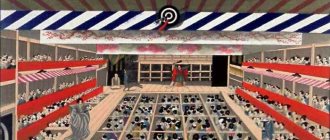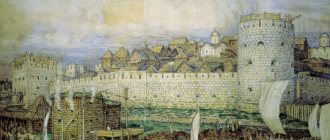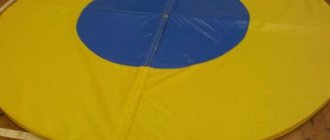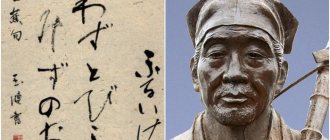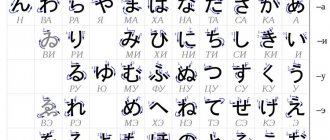Where and when did the art of origami originate?
The obligatory material for this type of art is, of course, paper. Although the first paper-making machine was invented in China, the history of origami begins in Japan. It was the Japanese who began to put together various figures at the beginning of the 8th century. By the way, in Japanese the word “origami” means “folded paper”. It is worth noting that in those days paper was a very expensive material, so it was available only to churches and monasteries. The monks made special paper boxes called “sanbo”, in which they made sacrifices to the gods. These first origami crafts were made without the use of any tools, and the material was only paper.
A little later, every Japanese aristocrat knew how to make similar boxes to present a gift to a loved one or as a tribute to God. And after 600 years, paper ceased to be such a valuable resource, which allowed this art to develop at a rapid pace. The history of origami has probably long been forgotten by the Japanese, but the technique they presented for folding the first airplanes, animal figurines and amazing flowers delights the whole world today.
History of origin
Of course, origami is primarily paper crafts. And the first paper, as we know, appeared in Ancient China at the very beginning of the second century AD. Therefore, the history of paper origami must be associated with this country.
But it's not that simple. It is believed that origami originated in Japan. Allegedly, the first figurines originated from the art of draping fabrics, which was necessary in the manufacture of traditional Japanese clothing.
In addition, while paper was expensive and available only to temples, in both China and Japan origami was used only by clergy for religious worship.
Over time, origami crafts also appeared in Japanese noble families. A true nobleman was now even considered such if he could entertain a bored lady by folding these angular, but arousing interest, figures. And samurai used crafts to fold notes. Only “their” person could read this message by unfolding the figurine. Even later, origami began to decorate rooms during all kinds of festive celebrations.
A traditional Japanese wedding, that is, a wedding held according to the canons of Shintoism, for example, involved the obligatory decoration of the interior with folded paper butterflies, which symbolized the bride and groom.
The most ancient origami crafts
As mentioned above, the first products made using the origami technique were boxes. But since they were made exclusively for practical and not decorative purposes, they cannot be called true works of art. Crane - it was with this figure that the history of origami as an art form began. In the first Japanese publication on origami, entitled “Semba - tsuru orikata,” which translated means “How to fold a thousand cranes,” the features of folding 49 models of cranes from paper were described. It was a fairly detailed origami instruction, although with a minimal amount of graphic illustrations. This book was published in 1797 by the abbot of the Rokan Temple.
It is worth noting that the book includes instructions for folding not only individual cranes, but also various combinations of them. For example, the figures could be given the shape of a garland, which was obtained by connecting several cranes by the tips of their wings or beaks.
Deer from modules
The sika deer is the second most important animal for the Japanese, after the raccoon dog. They are considered messengers of several gods at once and even acquired their own city. In the ancient capital of Japan, the city of Nara, deer roam the streets as freely as local residents or numerous tourists. They are hand-fed, groomed and cherished, and the killing of these harmless, trusting animals is considered a state crime.
Realizing that people treat them in a special way, the deer have completely ceased to be afraid and every now and then they pester passers-by, demanding a treat. At every city intersection there are special vending machines with the favorite delicacy of four-legged divine messengers - saltine crackers. And if an overly thrifty tourist or city dweller passes by such a “deer canteen”, disgruntled animals stand in his way and persistently push him towards the coin acceptor.
Today, the city of Nara is home to over 1,200 deer. According to legend, once one of the supreme gods of the Japanese pantheon, Takemikazuchi no, rode into Nara on this very animal. The Kasuga Shrine was built for the celestial, and a park was laid out around for his deer. To commemorate your visit to this amazing city, talismans with images of the four-legged “owners of Nara” are sold. The Japanese believe that deer brings happiness, longevity and prosperity. However, you don’t have to go to Nara to get a good talisman.
You can make a deer yourself using the modular origami technique. The Japanese sacred beast will make an excellent interior decoration or an impressive gift and will definitely bring joy to those around you.
Development of the art of origami in the world
The art of origami in Japan began to develop most actively after World War II. The history of origami owes much to the Japanese master Akiro Yoshizawa. It was he who began to fold the first, until then unknown, paper figures, among which were frogs, fish, cranes, iris flowers and many others.
As for European countries, the adherents of this art living on their territory learned a lot from Japan. However, it cannot be said that the history of origami in Europe is connected exclusively with the Land of the Rising Sun. Thus, some of the figures were folded by Spanish craftsmen, and the symbol of origami in this country is paper birds - “pajaritas”. There is an assumption that this figurine was first put together in Toledo in the 12th century.
In 1937, Europe's first book on origami, Making Paper Toys, was published in London. Its author was Margaret Campbell. Thanks to her, it became easier to fold such origami crafts as “bird”, “water bomb” and “frog”. And in 1946, a diagram of folding a crane was published in an English children's magazine.
Origamists of the West
The Spanish writer, poet and philosopher Miguel de Unamuno, who lived at the turn of the 19th and 20th centuries, created many figurines and wrote two books on origami. His name is today associated with the Spanish and South American schools of this art.
Around the same time, paper figures appeared in France, this time among magicians on the stage. The famous American illusionist Harry Houdini also successfully tried himself in the art of making paper crafts.
A significant contribution to the history of origami for children was made by the German theorist of preschool education, founder of the kindergarten system, Friedrich Froebel. Back in the 19th century, he worked on developing a child’s logical thinking by putting together simple figures. The basics of geometry, embodied in the trick of folding a square out of paper, were borrowed by a German teacher, probably from the teachings of the ancient Arabs.
The 20th century became a real open gate in the history of origami art for the merging of all its traditions and united amateur origami artists from all over the world. To this day, textbooks are published in many languages of the world, centers are opened in which origami masters teach, and its forms and techniques are developing and becoming more complex. However, even basic models, which seem simple to experienced craftsmen, can arouse keen interest and even admiration among beginners taking their first steps in the world of origami crafts.
Development of the art of origami in Russia
In Russia, the development of this type of art goes back to ancient times, but it is still impossible to give an exact answer to the question of when and how the first paper origami first appeared on the territory of our country. There is reliable evidence that Leo Tolstoy knew how to fold various paper figures and devoted a lot of time to this. His manuscript was found, where he mentions that one woman taught him how to make cockerels from paper, the homeland of which is Japan. These “creatures” flapped their wings very funny when their tail was pulled. Tolstoy wrote that later everyone to whom he showed how to fold this figure was delighted with what they saw.
If we talk about more recent times, the development of origami in Russia was so rapid that even during the period of the Soviet Union there was not a single schoolchild who could not fold a paper boat, airplane, cup and many other objects.
About the benefits of origami
Many teachers have said and will continue to say that origami is an absolutely invaluable activity for children. Firstly, it develops fine finger motor skills and imagination, and develops such important skills as perseverance and patience. Secondly, the little origamist learns in practice basic geometric concepts such as square, triangle, diagonal, vertex, angle, median. The technique of folding figures poses specific logical problems for him, which, when solved, will certainly reward the child with another elegant model. Finally, origami is inexpensive. All you need is the right size paper and a little patience to follow the instructions.
However, almost everything that has been said can be applied to adults. Moreover, the field of origami, it seems, will never become scarce and will constantly present its followers with more and more new techniques and options for realizing their fantasies and bold projects.
Varieties of origami
Origami crafts can be presented in the form of both flat and three-dimensional figures. By flat products we mean various animals and objects that have only one front side and are not able to maintain a vertical position on the surface. This technique is used to fold cats, bears, snowmen and many other figures.
As for volumetric origami, it is immediately worth noting that many people confuse this technique with modular, but these are two different things, and this is important to know. Speaking about volumetric origami, we mean that from one sheet of paper, through all kinds of folding, you can get a figure that will maintain a vertical position without outside support. Just remember the boats that can not only stand on the table, but also successfully sail along the stream. Many figures can be made in a similar way.
Folding Methods
- Simple origami involves folding using only mountain and valley folds. This method was invented by British origamist John Smith. The purpose of this method is to facilitate the creation of a figure by inexperienced beginner origamists - children, people with limited motor skills.
- Pattern folding - involves creating a model according to a preliminary drawing, which shows the folds of the model. Patterns are used to create new models.
- Wet folding was invented by Akira Yoshizawa and involves wetting the paper before folding to give the figures smooth lines or rigidity, depending on the author’s ideas. This method is very effective in creating flowers and various animals, while they look more natural and most similar to the original.
Thank you for attention. Stay tuned for new articles and subscribe to our family blog. Bye bye.
The simplest origami crafts
The instructions for origami “house” are one of the simplest. To do this, you will first need to fold a square sheet of paper in half, and then in half again, but this time vertically. The last action is performed to mark the center, to which in the next step it is necessary to bend the edges of the rectangle and again obtain a square. After this, the last bends unfold, and the upper part of the rectangle is bent to the first intended line at an angle of 45 degrees. After this, you should unfold the corner and, bending the top layer of the rectangle towards the middle, form a “roof”. Similar actions need to be done with the opposite side. Here the house is ready! To make it more realistic, you can use pencils, felt-tip pens or colored paper, glue and scissors.
Another common and simple paper origami is a boat. To make it, you will need a rectangular sheet of paper, which should be folded in half across, and then in half again, but this time lengthwise. Flatten the last bend and bend the upper corners of the sheet towards it. After this, one layer of the lower part, which remains after folding the corners, must be folded up on one side, and the second layer – up on the other side. Carefully bend the corners obtained on the sides to opposite sides so that they do not protrude. Next, bring the corners of the resulting triangle together to form a square. Next, the lower corners need to be folded up on different sides, and then the corners of the resulting triangle are brought together again. At the last stage, the upper corners need to be moved apart and you can go with the boat to the stream.
Origami and its importance for the development of preschool children
Lyudmila Nesterova
Origami and its importance for the development of preschool children
"ORGAMI AND ITS IMPORTANCE FOR THE DEVELOPMENT OF PRESCHOOL CHILDREN ."
Teacher of MBDOU CRR -kindergarten No. 7 “Golden Key”
Almetyesk, Republic of Tatarstan Shaikhutdinova Gyuzel Fagimovna.
"The child's mind is
at his fingertips"
V. A. Sukhomlinsky.
Origami (Japanese, lit.: “folded paper”
) is the ancient art of folding paper figures.
Origami is an integral part of ancient Japanese culture. Scientists suggest that more than a thousand years ago, making paper figurines was part of a sacred ritual dedicated to the goddess of mercy, Kanon. Statues of the goddess were decorated with similar figures to appease her and ask for help.
Later, origami firmly entered into Japanese life and became not only part of the religion of the Japanese people, but also an integral component of national holidays.
origami for all occasions - be it a joyful or sad event in the life of a Japanese person, or some kind of special occasion. If a Japanese person buys an origami figurine in a store , then it is necessarily packaged in a package of a certain type, so that, having met a passerby with such a package, a knowledgeable person can immediately determine what event the stranger is going to. For the Japanese, it is not enough to make origami ; it is very important to pack it correctly, since the appearance of the packaging is no less important than the gift itself.
«Origami»
translated
means “folded paper”
, and this is actually true.
Many people think that making a figurine out of paper is quite easy, you just need to use glue, scissors and other tools and materials. However, when making traditional origami, it is permissible to use only paper and nothing else (only when making kusudama can you use several identical modules).
Initially, to create origami, only a sheet of paper was used, which had to be folded in a certain way to end up with a finished figurine. Traditional origami involves only folding paper in a certain way, resulting in a figurine. This is a rather complex skill that will take a lot of time to master.
Later, origami began to use more unusual methods of making figurines, using glue, scissors, fur, and other improvised materials. An exception to the rule may be kusudama and those figures that consist of separate modules.
After completing work on the figurine, you can paint it - this is also allowed in classic origami .
There are a huge variety of origami . Some figures have a similar “mechanism”
folding, as they consist of identical basic shapes.
The most common figurine among the Japanese is the Japanese crane.
.
Kusudama (translated as “healing ball”
) is no less common among local residents.
It is in the manufacture of this type of origami that glue is used .
Kusudama are very beautiful. They resemble a ball in shape, which consists of several modules. Since kusudama is quite difficult to make and they consist of many modules, it is better to involve several people in their production.
The Japanese sincerely believe that such balls have miraculous powers and can help the sick. Also, according to the Japanese, the “Japanese crane”
.
It was this origami that became an international symbol of peace, and long before that it was considered the key to a happy life, prosperity and success.
After origami became widespread in Japan, it became firmly established in the everyday life of local residents. They made all kinds of wallets, vases, boxes and much more that could be given as a gift or used in everyday life.
Making paper figures has always been of great interest to people, but it really only appeared relatively recently - about 3-4 decades ago. Origami has become a fashionable art form.
Who would have imagined that hundreds, if not thousands of different figures could be folded from an ordinary sheet of paper?
Origami is one of the ways of self-expression, perhaps that is why it has become so widespread among schoolchildren, students, and creative people; origami is increasingly used for advertising purposes. There are also those who do not stop at paper as the source material, but go further - using origami to invent new forms of art.
Origami figures can be made in three different ways.
It involves folding figures from one square sheet without cuts. This is the traditional method that is used most often.
It involves folding figures from a sheet of rectangular and regular triangular shapes.
Folding figures from 3 or 4 identical parts - modules.
At first glance, it seems that it is impossible to fold a complex beautiful figure from a simple sheet of paper. However, such thoughts often come to us when we are faced with any new business. No one begins their acquaintance with origami with complex products - first you need to become familiar with the technique of folding basic shapes. These are the simplest figures - origami , on the basis of which much more complex and unusual products are folded.
In addition, before you start folding figures, you should become familiar with the origami , which includes the basic symbols necessary for the work. Without knowing the alphabet, it is impossible to understand what is written on the diagrams and how to perform this or that action.
The inventor of this unique primer in the world of origami is Japanese Akira Yoshizawa. This is a significant figure in the world of origami , because it was this person who made him truly famous and raised him to new heights. He began to develop origami as an art form in the middle of the 20th century, and since then his descriptions of creating figures have been used by origamis from all countries .
But actually, what is it for origami ? What does it give?
How quickly time flies. Our children are growing up unnoticed. The development of a child in us adults causes surprise and joy. We are amazed by the speed of his success: yesterday he could not do anything, but today he can already cope with everything. The child’s constant movement forward, the emergence of new things, the transition from the simplest reactions to more complex and meaningful actions, mastery of speech, the first manifestations of independence - this is what characterizes the child’s development .
"hand movements are closely related
with speech and its development " -
V. M. Bekhterev.
Origami is very popular due to its entertaining and educational capabilities . Origami is magic , a miracle and, of course, a game.
It is worth remembering Friedrich Froebel, the famous German teacher, creator of the first kindergartens. It was he who first began to promote origami as a didactic material for explaining to children some simple rules of geometry. He said: “ Origami is when a thousand and a thousand different figures are made from one part. Simple folding techniques and the boundless imagination of people can create with the help of origami a whole world that is special , joyful, cheerful, kind and unlike anything else.”
Correct, well- developed speech is one of the main indicators of a child’s readiness for successful learning at school.
First, subtle movements of the fingers develop The development and improvement of speech is directly dependent on the degree of formation of fine movements of the fingers. If the development of finger movements lags behind, then speech development . V. A. Gilyarovsky Fr.
Manual dexterity training also contributes to the development of such necessary skills and qualities as preparing the hand for writing (in preschool age, it is preparation for writing, and not teaching it, that is important, since early training often leads to the formation of incorrect writing techniques).
Preschool age is a bright , unique page in the life of every person. It is during this period that the child’s connection with the leading spheres of existence is established: the world of people, nature, the objective world. There is an introduction to culture, to universal human values. Curiosity develops and interest in creativity is formed.
Six or seven years pass, and the child finds himself at the threshold of school. By this time, he must have mastered a significant range of knowledge , skills and abilities. His perception, memory, speech, thinking must acquire arbitrariness and controllability. The child must master the ability to act consciously, subordinating one impulse to another; he must develop the initial forms of volitional control of behavior.
The above allows us to highlight a number of advantages of origami as a means of intellectual and aesthetic education of preschool children . These include:
— The availability of paper as a material and the ease of its processing attract children . They master various techniques and methods of working with paper, such as bending, repeated folding, cutting, gluing.
— Origami develops in children the ability to work with their hands under the control of consciousness, their fine motor skills of the hands, precise finger movements are improved, and the eye develops .
— Origami promotes concentration, as it forces you to focus on the manufacturing process in order to get the desired result.
— Origami is of great importance in the development of children’s constructive thinking , their creative imagination, and artistic taste.
— Origami also stimulates the development of memory , since in order for a child to make a craft, he must remember the sequence of its manufacture, techniques and methods of folding.
— Origami activates thought processes. During the construction process, the child needs to correlate visual symbols (showing folding techniques)
with verbal ones
(explanation of folding techniques)
and translation of their
meaning into practical activities (independent execution of actions)
.
— Origami improves a child’s work skills and creates a work culture.
— Origami helps create play situations. Having folded animal masks out of paper, children engage in a dramatization game based on a familiar fairy tale, become fairy-tale heroes, travel to the world of flowers, etc.
In the process of folding origami , children will become familiar with basic geometric concepts (angle, side, square, triangle, etc., while at the same time the vocabulary is enriched with special terms. Children will be able to easily navigate in space and on a sheet of paper, divide the whole into parts, which is necessary preschool children ... In addition, children learn a lot of new things related to geometry and mathematics.
classes in a preschool educational institution expand the range of interests and communication of children . Such activities not only bring children , but also develop their communication skills and allow children to satisfy their cognitive interests.
A child should know and be able to do a lot when entering an unfamiliar, but so attractive life. Origami will help prepare a child for this important moment in life - an art that is close and accessible to him. The availability of paper as a material and the ease of its processing attract children . They easily master various techniques and methods of working with paper, such as bending, repeated folding, cutting, gluing. Origami develops in children the ability to work with their hands under the control of consciousness.
First of all, he learns to communicate with paper, guess its qualities, and develops fine motor skills of his fingers. Psychologists believe that this is very important for the normal formation of speech. Experts recommend that children who are just learning to speak, as well as preschoolers , perform tasks involving working with their fingers as often as possible - tinkering, sewing, playing musical instruments. Origami gives a huge scope for this - not only are there many small movements, they are also varied. It is also very important that both hands work simultaneously when folding the figures. After all, most of us are “one-armed”
: We do almost everything with our right hand.
And this leads to disproportionate development of the left hemisphere of the brain, which controls the right hand. And practicing origami harmonizes the work of the brain hemispheres, because we do everything with two hands. And this helps the development of the child’s creative abilities. Origami is of great importance in the development of children's constructive thinking , their creative imagination, and artistic taste. Origami introduces children to basic geometric concepts (angle, side, square, etc., the eye develops , and at the same time the vocabulary is enriched with special terms. Origami activates thought processes. During the design process, the child needs to connect visual symbols (showing folding techniques)
with verbal
(explanation of folding techniques)
and the period of their
meanings into practical activities, i.e., independent execution of actions. And, of course, develops the habit of concentrated, painstaking work. Origami promotes concentration, as it forces you to focus on the manufacturing process in order to get what you want result.
You can combine origami activities with activities , with games. Having folded animal crafts from paper, children can use them to tell familiar fairy tales, become fairy-tale characters themselves, travel to the world of flowers, etc. And this is not all the advantages, which contains the magical art of origami .
classes in a preschool educational institution expand the range of interests and communication of children . Such activities not only bring children , but also develop their communication skills and allow children to satisfy their cognitive interests. Systematic origami influence the all-round development of the child and contribute to successful preparation for schooling.
The emergence of modular origami
Modular origami, like regular origami - flat or three-dimensional, originated in Japan. The first mention of this art form dates back to 1734. It was then that the Japanese author Hayato Ohoko published a book that contained instructions for folding a modular cube.
Modular origami differs from conventional origami in that in the first case, folding one figure requires many small triangles, pre-folded in a special way into so-called modules, while traditional origami requires only one sheet of paper.
Basic models of classic origami
It is very possible that it is thanks to Froebel that today it is so easy to tell the story of the origin of origami for children using the example of such simple models as a cap, a boat, a glass. Well, most likely everyone did airplanes and jumping frogs at least once in childhood.
And here is another model that occupies an initial position in teaching beginners. Today in textbooks it is called the “Sanbo box”. The ritual Sanbo was once used to place various offerings to the gods in temples. Later, having crossed the temple threshold, it began to be used when setting the table. This is quite a universal container for storing, for example, nuts, sweets or paper clips.
And one of the most popular origami models is a miniature bird with spread wings. It probably appeared in Japan, because instructions for assembling this figurine appeared in Europe only towards the end of the 19th century. The World Exhibition in Paris, held in 1878, to which the Japanese brought this figurine and revealed the secret of its folding, became an incentive to unite the traditions of the West and East and to the development of a new world origami.
Technique for folding modules and connecting them
To make modules, you will need standard sheets of paper in quantities that are 4 times less than the number of modules required to make a future three-dimensional figure. First, a sheet of paper must be folded in four and, using scissors or a ruler, divided into 4 parts along the resulting bends.
Next, each of the four rectangles needs to be bent along and then across. The last bend is needed only to obtain a central line, which is necessary for the convenience of further work. After it is made, it is necessary to straighten the product and bend the side parts of the rectangle to the center line. Then you should turn the module over and bend the protrusions that remain upward, and the corners to the opposite side. Next, you need to go back one step and bend the protrusions inside the product. To obtain the finished module, it is necessary to fold the resulting triangle in half so that two pockets are formed on one side of it, into which the sharp ends of the second module will be subsequently inserted to obtain a certain shape.
Types and techniques of origami
Types of origami in the modern world have their differences. Basic techniques:
- The classic form of origami is usually thought of as folding a square sheet of paper into a figure without using scissors and glue.
- Modular origami involves assembling complex structures from individual parts.
- Kusudama is a type of modular origami. The essence of the technique is to assemble spherical figures from cone-shaped paper parts. To assemble the final figurine, the parts are usually simply stitched together. Using this technique, you can create stunning flower arrangements that often decorate the interior of your home.
Classic
Modular
Kusudama
There are also differences in the methods of folding the figures:
- A simple way is to use “valley” and “mountain” folds. This can make it easier to create origami for preschool children and people who have limited motor abilities.
- Pattern folding is applied using a drawing that is created in advance. All folds are marked on the diagram. When creating new models, it is Patterns that are used.
- Wet folding was invented by Yoshizawa. Thanks to the wetting of the paper when folding it, the lines are quite smooth. This option is preferable for creating flowers and animals. The resulting figures look as natural and similar to the original as possible.
Classic
Pattern
Wet
Traditional paper origami
Not only Japanese Buddhists, but also Shintoists believe in the beauty hidden in things. They say that every thing or phenomenon contains God within itself. Shintoists believe that deity resides in many things, especially those that are beautiful and unusual, such as paper figures. An important role was also played by the consonance of the words “paper” and “deity”, which are pronounced the same in Japanese - kami.
Already in the 9th-12th centuries, in connection with the cults of Shintoism and Buddhism, the first, now traditional, options for folding paper figures . This is a gohei - a sophisticated zigzag that hangs at the entrance to Shinto shrines and indicates the presence of a deity in this place. There is also a custom of attaching gohei to the belts of sumo wrestlers before the start of a fight.
Today in Japan they fold kata-shiro - these are eight dolls made of white paper, which are designed to protect against misfortunes. Traditional forms of origami are various amulets made of paper - gofu, a symbol of harmony in the family - nagashi-bina; to cleanse temples and expel evil spirits, followers of Shintoism use haram-gusi, a broom folded from strips of white paper. In general, the role of paper and origami in particular in the religious cults of Japan is very great.
Starting from the 17th century, paper ceased to be a luxury item and origami, which had long gone beyond the boundaries of religious ceremonies, now became a popular pastime not only for the nobility, but also for the common people. It was at this time that many new forms were invented, which later became classic. Among them is the Japanese crane (tsuru), a traditional Japanese symbol of happiness and longevity. In the land of the rising sun, the art of origami has become a tradition that has been passed down from generation to generation, mainly through the female line, for centuries.
Origami paper
Almost any sheet material is suitable for folding simple models, but the choice of the latter greatly influences both the manufacturing process and the final appearance of the figurine.
Regular printer paper is suitable for models such as a crane or a water bomb. Heavier grades of paper can be used using the wet folding technique.
There is also a special paper for origami called "kami". It is sold immediately in the form of squares. Typically, one side of such paper is white and the other is colored, but there are also two-color varieties and varieties with ornaments. Origami paper is lightweight and well suited for folding many types of figures.
To work out small details, they use a material that can hold its shape well - foil paper, which is a thin sheet of foil glued to a thin sheet of paper or covered with paper on both sides.
Most often, square sheets of paper are used for origami, but other shapes can also be used: rectangles, triangles, pentagons, hexagons, octagons, and circles.

